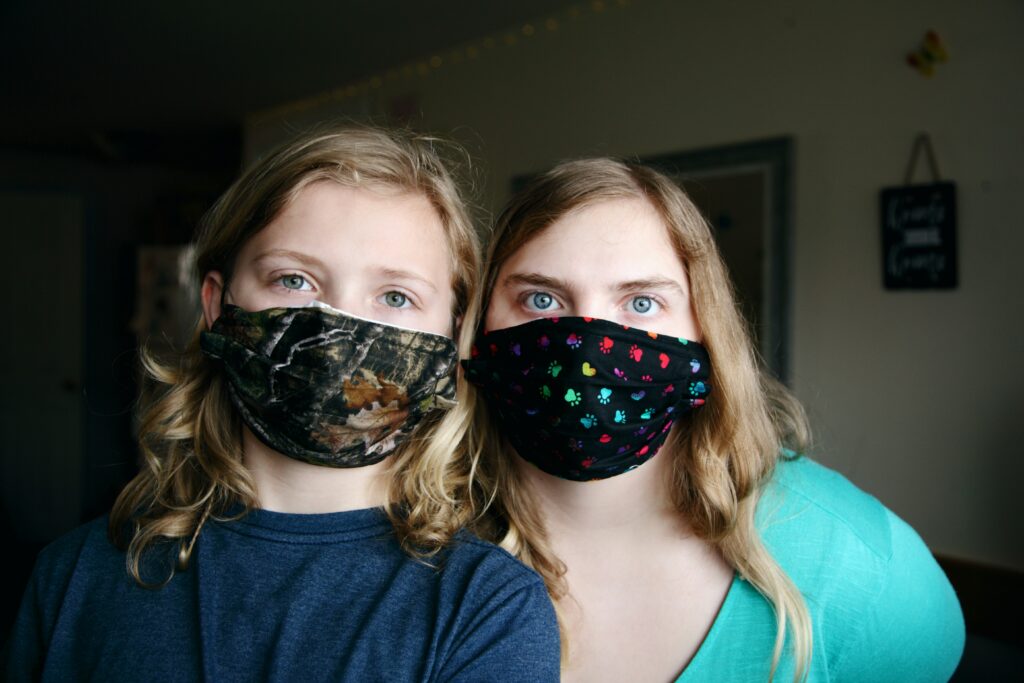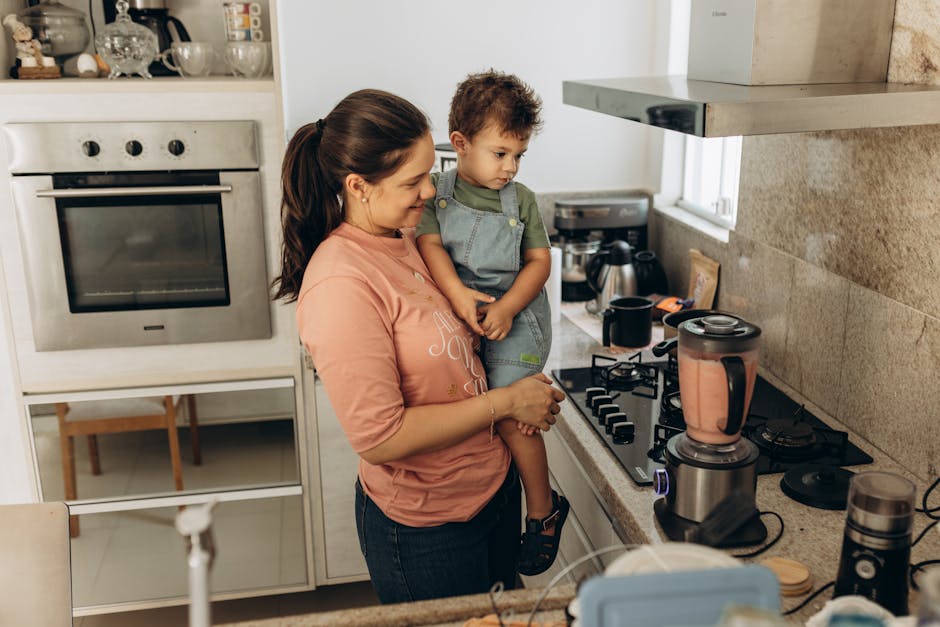Navigating the complexities of blended family dynamics can be challenging even in the best of times, but the unprecedented events of the past year have added new layers of stress and strain. As a mental health advocate, I’ve witnessed firsthand the impact of the pandemic on families, particularly those in blended situations.
The unique blend of relationships in these families can create both resilience and vulnerability, making them especially susceptible to the disruptions brought about by the global health crisis. In this article, I’ll delve into the ways in which the pandemic has reshaped the dynamics within blended families, affecting not only the adults involved but also the children caught in the midst of these changes.
From shifting routines to managing conflicting emotions, the ripple effects of the pandemic have tested the strength and adaptability of blended family units. Join me as we explore the challenges, triumphs, and strategies for maintaining mental well-being in this new normal.
Understanding Blended Family Dynamics
In navigating the complexities of blended families, it’s essential to acknowledge the intricate dynamics that arise from merging households and relationships. The fusion of different family units brings together varying traditions, communication styles, and parenting approaches.
Understanding the unique makeup of blended families can shed light on the challenges they face and the strategies that can help promote harmony within the household.
- Communication Challenges in Blended Families: Effective communication is crucial in any family dynamic, but it becomes even more critical in blended families where individuals may have different backgrounds and upbringing. Misunderstandings can easily arise when navigating relationships with stepparents, stepsiblings, and ex-spouses, highlighting the importance of open and honest communication channels. By fostering a culture of transparency and respect, blended families can address conflicts proactively and cultivate stronger bonds among family members.
- Role Ambiguity and Boundaries: Blended families often grapple with role ambiguity, where individuals may struggle to define their roles and responsibilities within the new family structure. Establishing clear boundaries and expectations can help mitigate confusion and reduce the potential for conflicts arising from differing interpretations of familial roles. By setting boundaries early on and openly discussing expectations, blended families can create a sense of security and predictability for all members.
- Parenting Styles and Discipline: The merging of diverse parenting styles in blended families can present challenges when establishing consistent discipline and guidance for children. Collaborating on parenting approaches and setting unified rules can help create a cohesive parenting environment that promotes consistency and stability for children. Understanding and respecting each other’s parenting philosophies can foster mutual respect and cooperation among adults in the blended family.
- Coping with Change and Transition Blended families often experience significant changes and transitions as new members integrate into the family unit. Acknowledging and validating the emotions that arise during these transitions can help family members adapt to the evolving dynamics and bond through shared experiences. Implementing coping strategies such as open communication, flexibility, and mutual support can assist blended families in navigating changes with resilience and understanding.
Embracing the complexities of blended family dynamics involves recognizing the nuances of relationships, communication patterns, and individual needs within the family unit. By fostering understanding, empathy, and proactive communication, blended families can navigate challenges with resilience and strengthen their bonds amidst unprecedented circumstances.
Impact of the Pandemic on Mental Health
Exploring the impact of the pandemic on mental health in blended families reveals a profound shift in dynamics. The uncertainties and challenges brought about by the pandemic have significantly heightened stress levels for both adults and children in these family structures.
- Increased Anxiety Levels: The pandemic has led to heightened anxiety levels among family members as they navigate through unprecedented times, adapting to new routines and uncertainties.
- Elevated Stress: The added stresses of health concerns, financial instability, and disrupted daily routines have intensified the overall stress experienced by blended families.
- Impact on Children: Children in blended families have faced unique challenges during the pandemic, including dealing with changes in living arrangements, school disruptions, and emotional adjustments.
- Strained Relationships: The prolonged periods of confinement and changes in family dynamics have strained relationships, leading to conflicts and misunderstandings among family members.
- Decreased Social Support: The restrictions imposed due to the pandemic have limited the social support systems available to blended families, exacerbating feelings of isolation and loneliness.
- Need for Mental Health Support: The unprecedented circumstances have highlighted the importance of seeking mental health support and resources to cope with the emotional toll of the pandemic on blended family members.
Understanding the specific mental health challenges faced by blended families during the pandemic is crucial in developing strategies to support their well-being and resilience in the face of ongoing uncertainties and disruptions.
Challenges Faced by Blended Families During the Pandemic
During the pandemic, blended families have encountered significant challenges that have impacted their dynamics in various ways. Let’s delve into some of the key issues faced by these families:
Financial Strain
Blended families, like many others, have faced financial uncertainties during the pandemic. The economic repercussions, job losses, and unstable financial situations have added immense stress to already complex family structures.
This financial strain can amplify existing tensions and create additional hurdles for blended families to navigate.
Increased Stress and Anxiety
The heightened stress and anxiety levels experienced by blended families during the pandemic have been palpable. Uncertainty about health, concerns about the future, and the day-to-day challenges of balancing work, family, and personal well-being have taken a toll on the mental health of both adults and children in blended households.
Coping with these increased stressors has been a significant struggle for many families.
Communication Breakdowns
Effective communication is crucial for any family, and in blended families, where diverse backgrounds and relationships converge, communication breakdowns can exacerbate existing challenges. Misunderstandings, differing parenting styles, and conflicting expectations can strain relationships within the family unit.
Overcoming these communication barriers is essential for maintaining harmony and understanding among all family members.
Coping Strategies for Blended Families
Addressing the unique challenges faced by blended families during the pandemic requires tailored coping strategies to navigate through the complexities of their dynamics. Here are practical approaches to support the mental well-being of blended families:
1. Establish Routine and Structure
Creating a predictable schedule can provide stability and a sense of security for everyone in the household. Setting regular meal times, study periods, and family activities can help maintain a sense of normalcy amidst uncertainties.
2. Encourage Open Communication
Promoting open and honest dialogue within the family is essential for addressing concerns and resolving conflicts effectively. Encourage all family members to express their thoughts and emotions in a respectful manner.
3. Foster Individual and Bonding Time
Balancing individual space with quality family time is crucial in nurturing relationships within blended families. Encourage activities that promote bonding and strengthen the family unit.
4. Seek Support and Resources
Don’t hesitate to reach out for professional help or access community resources that cater to blended families. Counseling, support groups, and online forums can offer valuable guidance and emotional support.
5. Practice Self-care
Prioritize self-care to ensure that parents and children alike are mentally and emotionally well-equipped to face challenges. Encourage relaxation techniques, hobbies, and personal time to recharge and rejuvenate.
6. Establish Clear Boundaries
Define boundaries and expectations within the household to minimize misunderstandings and conflicts. Clearly outlining responsibilities and rules can foster a harmonious living environment for all family members.
Adopting these coping strategies tailored to the unique dynamics of blended families can help promote resilience, harmony, and well-being during these challenging times.




